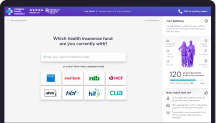Your health insurance coverage has some implications during tax season. There are three main payments you have to worry about:
- Private Health Insurance Rebate
- Medicare Levy Surcharge
- Lifetime Health Cover (LHC) Loading
Private Health Insurance Rebate
In order to encourage Australian residents to take out private health insurance policies instead of relying on Medicare, the Government offers rebates on the premiums based on income and age levels. One must hold at least a Basic tier hospital cover (see here to learn more about hospital cover tiers) in order to qualify.
Here’s the rebate rate for each income bracket (through 30 June 2021):
| For Singles | ||||
| <$90,000 | $90,001 – $105,000 | $105,001 – $140,000 | >$140,001 | |
| Age | Base Tier | Tier 1 | Tier 2 | Tier 3 |
| < 65 | 25.059% | 16.706% | 8.352% | 0% |
| 65 – 69 | 29.236% | 20.883% | 12.529% | 0% |
| 70 + | 33.413% | 25.059% | 16.706% | 0% |
| For Couples/Families – add $1,500 to the income threshold for each child after the first | ||||
| <$180,000 | $180,001 – $210,000 | $210,001 – $280,000 | >$280,001 | |
| Age of the oldest person in the family | Base Tier | Tier 1 | Tier 2 | Tier 3 |
| < 65 | 25.059% | 16.706% | 8.352% | 0% |
| 65 – 69 | 29.236% | 20.883% | 12.529% | 0% |
| 70 + | 33.413% | 25.059% | 16.706% | 0% |
You can either get the rebate as a reduction in the payment to the insurers or claim it as a refundable tax offset upon lodging your tax return.
Medicare Levy Surcharge (MLS)
Medicare levy is a 2% tax most Australians have to fund Medicare. Medicare Levy Surcharge is an additional 1% to 1.5% tax charged for people earning income above a certain threshold and do not have an appropriate level of private hospital cover.
Every single person in your family/household must have sufficient private health coverage which is defined as minimum Basic tier hospital cover with a maximum excess of $750 for singles and $1,500 for couples/families.
Below are the MLS rates based on income levels for singles and couples/families. Note that ‘couples’ refer to those in marriage and de facto or registered relationships.
| Income Thresholds for Singles | <$90,000 | $90,001 – $105,000 | $105,001 – $140,000 | >$140,001 |
| Income Thresholds for Families | <$180,000 | $180,001 – $210,000 | $210,001 – $280,000 | >$280,001 |
| MLS Rates | 0.0% | 1.0% | 1.25% | 1.5% |
Lifetime Health Cover (LHC) Loading
In order to encourage young adults to sign up for private health insurance earlier in life, the government imposes Lifetime Health Cover (LHC) loading of 2% on the premium for each year after age 30 where you didn’t hold private health insurance. LHC loading is removed after 10 years. The maximum rate is 70%. If you take out private health insurance for the first time at the age of 65, you will be charged the maximum LHC loading rate of 70%.
LHC loading is not included in the calculation of the Private Health Insurance Rebate you get. In addition, you will be charged applicable Medicare Levy Surcharge for not having sufficient private hospital coverage.
Other Potential Tax Factors Related to Health Insurance
If you receive additional government rebates or incentives, you may need to claim them on your tax returns. Centrelink payments such as carer payments or home care packages could be considered incomes but there may be associated deductions available to income-tested recipients. Certain Government allowances, a beneficiary tax offset could be available to you.
As you mature and become eligible for more government benefits, you may want to enquire with an accountant to understand how to minimise your tax obligations using deductions, tax offsets, and other tax lodging guidelines that may be applicable to your situation.





